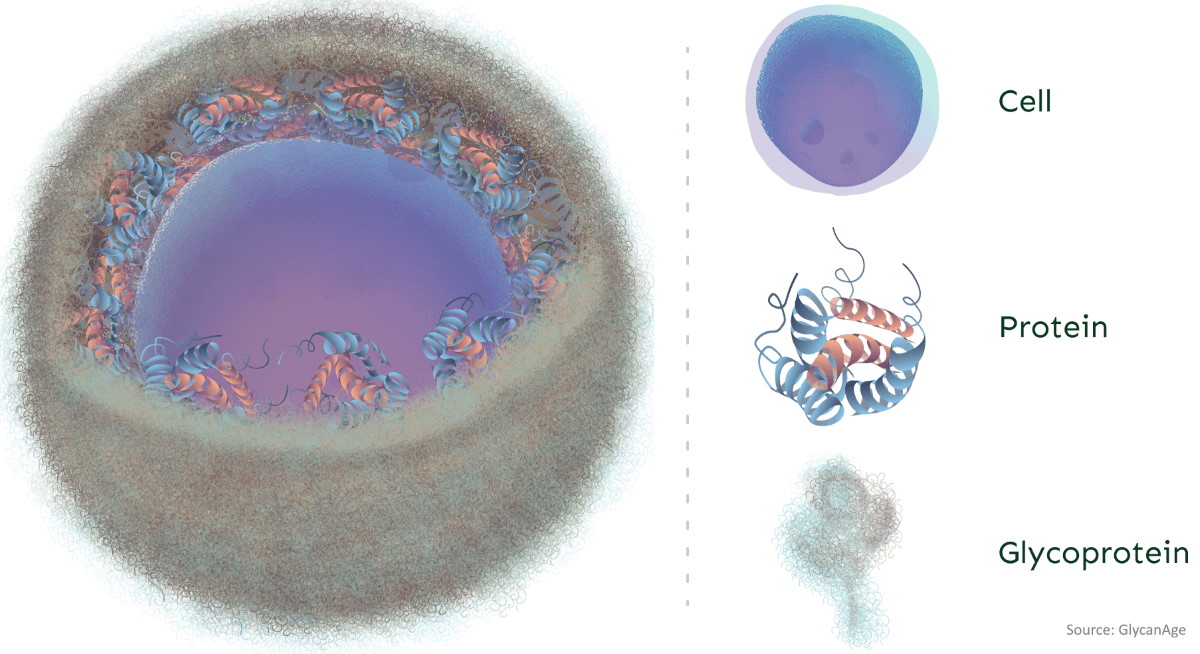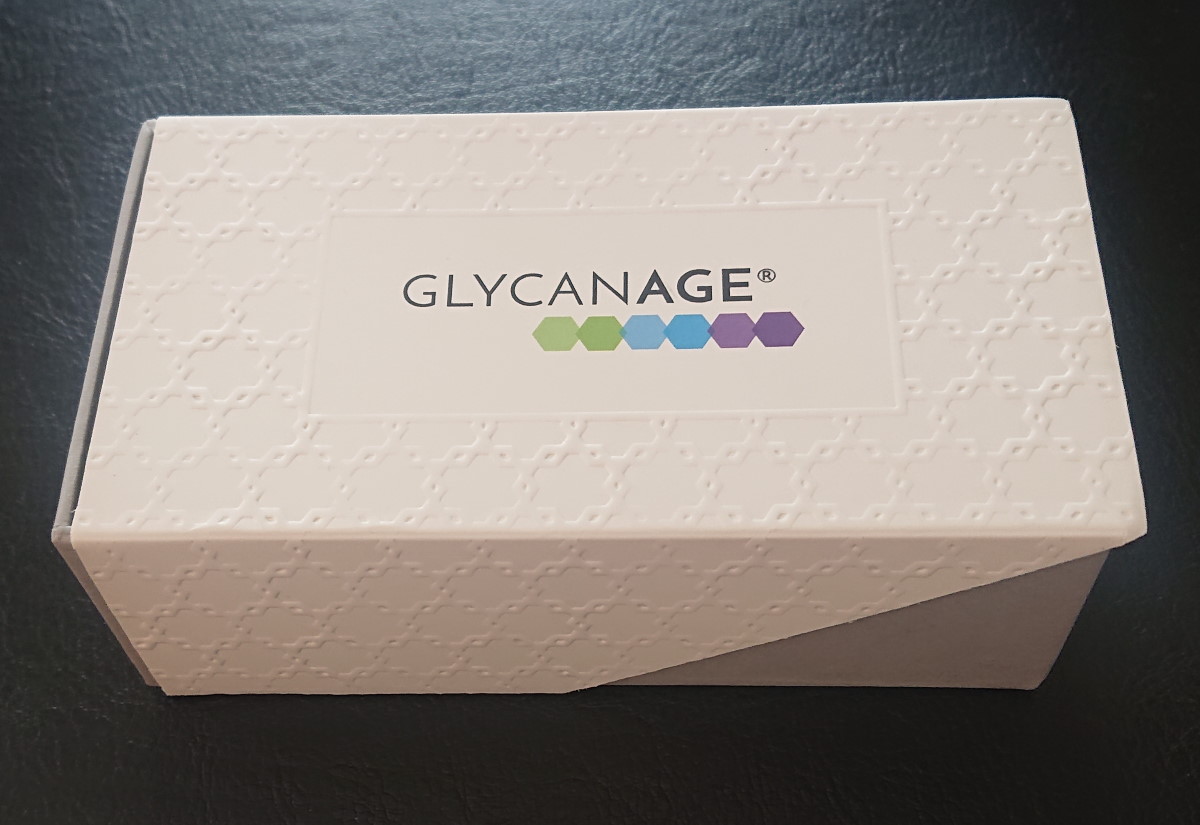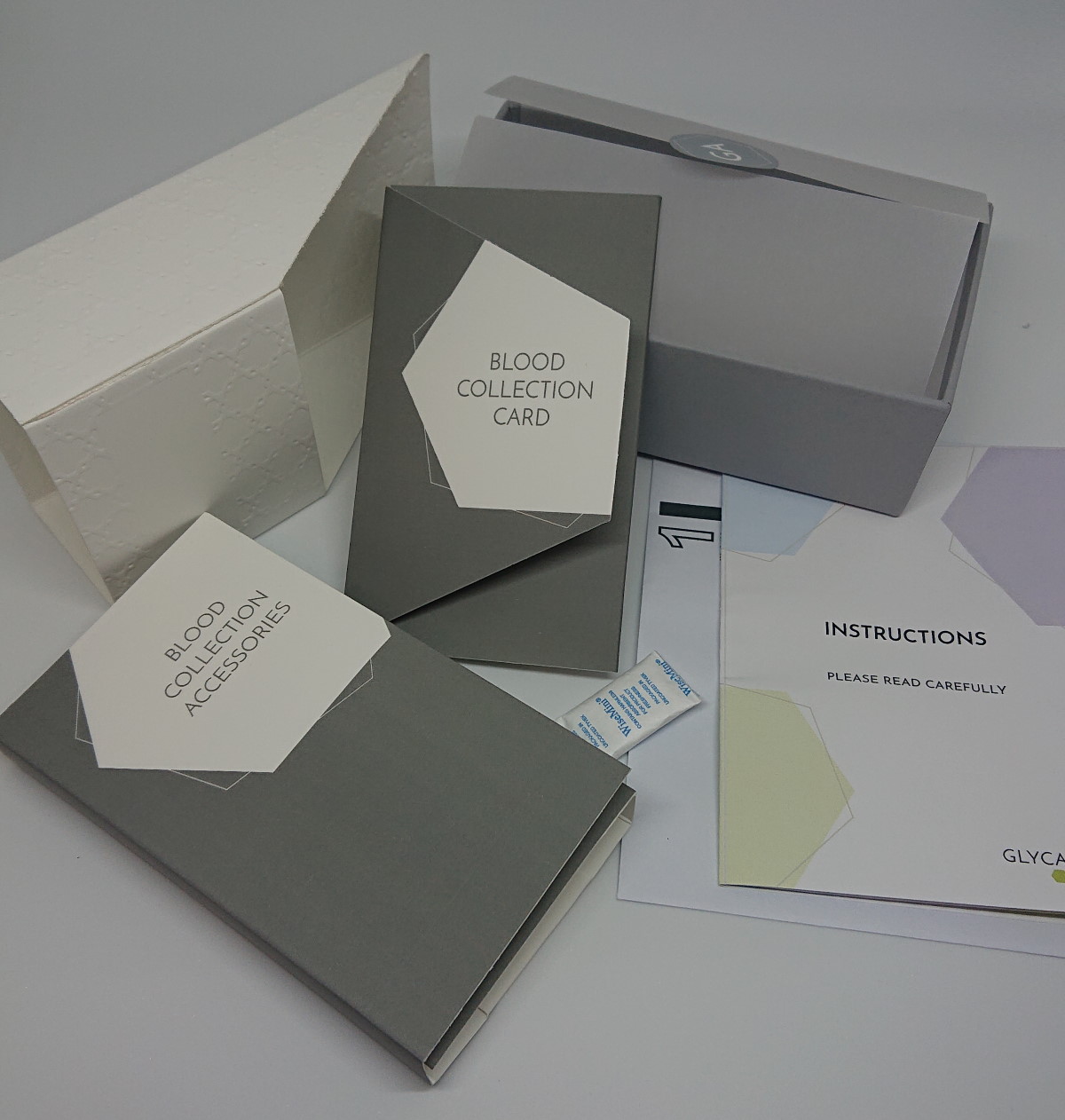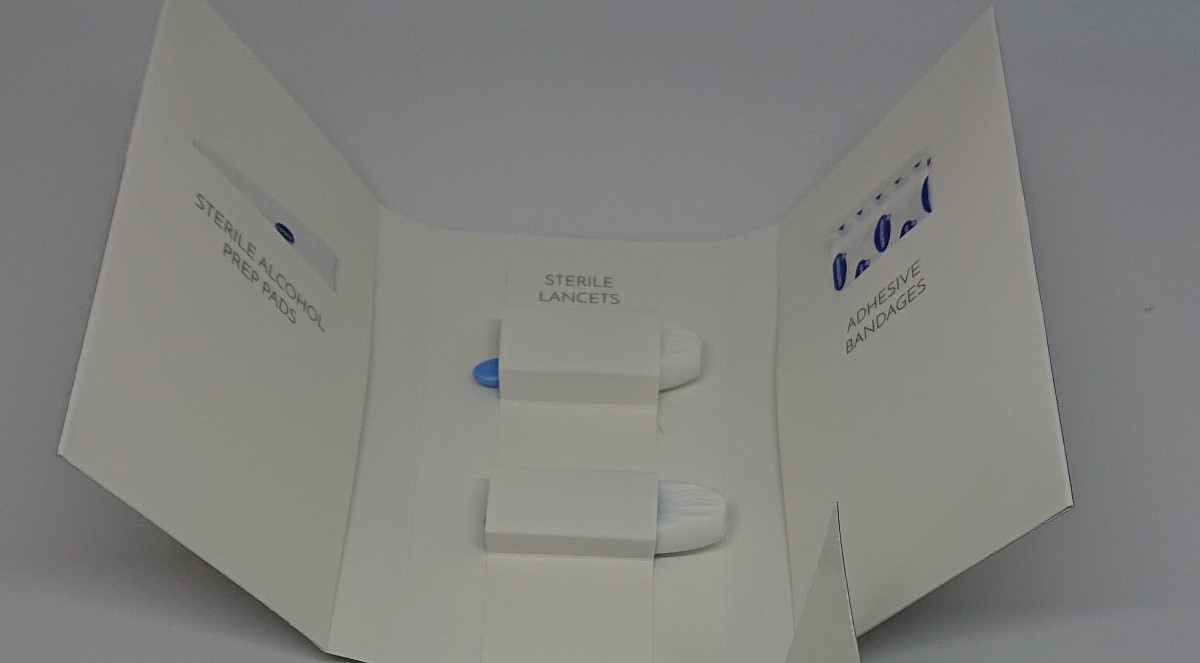Clock Foundation’s GrimAge Biological Age Test Review
Epigenetic age test provides information beyond biological age
Join the club for FREE to access the whole archive and other member benefits.
You likely know that everyone ages at slightly different rates – the risk of disease or death increases faster for some people than others. This effective age, or biological age, represents the age of an average person with the same mortality risk as you. So, a super healthy 60-year-old may have the same risk of an age-related disease as the average 55-year-old – in which case their biological age is 5 years younger than their chronological age (age in actual years lived).
There are many ways of determining biological age including physical and cognitive tests, as well as blood biomarkers (e.g. hs-CRP, C-glyTrp) and cellular features (e.g. telomere length, epigenetics). One of the newest, and possibly lesser known, methods is looking at your glycans – which, unsurprisingly, is what GlycanAge uses.
Jump to a specific part of the blog:
Everybody knows that the body is made up of cells; some people know that these cells have proteins on their surface (proteins are used for most activities in the body); but it’s not common knowledge that these proteins are covered with complex structures formed out of simple sugar molecules (monosaccharides). These sugar chains are called glycans, and when attached to a protein the combined structure is called a glycoprotein.
The forest of glycans attached to a cell’s membrane proteins is known as the glycocalyx – and its volume is about the same as the surface proteins which means it’s an essential part of cell chemistry affecting cell adhesion and communication.

As an indication of just how important glycans are, they are what determine your blood group. Like all cells, the surface of red blood cells (RBCs) is covered with glycoproteins. The protein component of these glycoproteins is the same for all blood types – however, the difference in just one sugar molecule in the glycan defines whether your blood type is O, A, B or AB.
The spectrum of glycans on cells in the body (the “glycome”) varies not only between cell types (i.e. different cells types have different collections of glycans) but also on individual cells – the glycome is dynamic and changes over time. If the cell undergoes a physiological change then the collection of glycans can change – both in the proportion of glycans present as well as introducing totally new glycan structures.
These changes are particularly noticeable in diseased cells (e.g. cancer) – but which comes first, the glycome change or the disease? Aberrant glycosylation has been observed up to 10 years before the onset of rheumatoid arthritis symptoms, and also in advance of multiple sclerosis, diabetes and cardiovascular disease, so this suggests that the glycome can trigger a range of diseases.
As well as being related to disease causing changes, glycans are also related to general ageing – which is where GlycanAge comes in.
So how are glycans related to your biological age? Glycans aren’t like rust – where its appearance is immediately a sign of trouble. Glycans are present on proteins as soon as they are formed, even during formation, as they start to get added in the rough endoplasmic reticulum (RER) and Golgi apparatus in the cell (“cotranslational”). It is the distribution of these sugars (the glycome), not the presence of them, that is important and can tell us about the health of the cell.
GlycanAge (https://glycanage.com/) has looked as glycans in over 100,000 human samples, focussing on glycans attached to Immunoglobulin G (“IgG”) cells - the most common antibody in your blood. The composition of IgG glycans is heavily affected by environmental conditions which, in turn, affects whether antibodies are pro-inflammatory or anti-inflammatory. This is important, because low-grade systemic inflammation, or inflammaging, can accelerate the ageing process and increase the risk for many diseases.
Leading the science behind the company’s product is Dr Gordan Lauc, Professor of Biochemistry and Molecular Biology at the University of Zagreb, where he performed the first large scale studies of the human plasma glycome in 2009. GlycanAge’s scientific advisory board includes some heavyweights which gives the science even more credence – these include Ronald Schnaar (professor of pharmacology and molecular sciences and neuroscience at the Johns Hopkins School of Medicine), Vlatka Zoldoš (professor at the University of Zagreb, Division of Molecular Biology) and Prof. Dragan Primorac (President of The International Society of Applied Biological Sciences).
I was fortunate to receive one of the 100 free tests GlycanAge issued as part of launching their product in the UK. But apart from ordering it (and not paying for it!) I assume the service was the same as for any customer. It costs £276 including a 30-minute consultation with a longevity specialist. You can save £40 off the price with a discount code available with free club membership.
The test kit arrived in sturdy and well-designed box – with an Apple-quality feeling to its design.

And its contents are all well-organised and clearly labelled – they’ve obviously put plenty of thought into making the experience as easy as possible for the participants.
 Inside the blood collection accessories case are the lancets, wipes and plasters:
Inside the blood collection accessories case are the lancets, wipes and plasters:
And then the important part – the sample test sheet, or sample collection card:

I was a bit worried about having four circles to fill, as at the time I hadn’t perfected the technique of getting plenty of blood out of a lancet prick. GlycanAge support responded very quickly to my query as to how important it was that all collection circles are filled. They provided this useful diagram which shows the blood stain doesn’t have to go right to the edge, and that is also the case in their sample collection how-to video on YouTube.

In practice, one or two drops of blood on each circle was plenty – and the circles are nice big targets so hard to miss!
You have to leave the collection card out for 2 hours to allow it to dry, before writing the sample collection date on it and posting it back.
Now it’s time to wait. It can take up to 4 weeks to receive your result, and mine did take the full month to come back.
My chronological age = 50
My GlycanAge = 75
Ouch! The report summary says it all… “your biological age is EXTREMELY UNFAVOURABLE, and you are 25 years older than your chronical age.”
Even with the error range stated as +/- 5 years, at best I’m 20 years more aged than an average 50 year-old; and at worst, almost dead!
The report then delves into 3 subsets of glycans, categorised as:
This measures IgG glycans without terminal galactoses. These start high in early childhood, then decrease during adolescence before starting to rise again with age. They are known to promote inflammation by activating the complement system through the lectin pathway.
I came in the bottom 4% for this category, though strangely, the week before I had taken a blood test showing a hs-CRP of 0.6 mg/l which puts me firmly in the low-risk category for heart disease and inflammatory conditions such as rheumatoid arthritis.
I performed even worse for this subset (IgG glycans with two terminal galactoses) coming in the bottom 2%. Unlike Glycan Mature, these glycans tend to suppress inflammation, so the more the better – and I don’t have many. There is a general decrease with age in men, and a sudden drop-off for women around the age of the menopause.
As above, it’s strange that my risk of inflammatory diseases is so high given a normal high-sensitivity C-reactive protein level.
The third grouping looks at IgG glycans in which terminal galactoses are further extended with an additional sialic acid. They are the most immunosuppressive of the IgG glycome and are generally considered to be biomarkers of good health.
Unfortunately, I scored bad with these as well, but at least only in the bottom third this time.
You’re also provided with a full in CSV format, showing the levels of each of the 24 data points. Although, I don’t think there are commercial glycome profiling companies that can provide you with any more information than that provided in the GlycanAge report. And even if there was, without knowing what each of the GP1 to GP24 groups contain, I’m not sure anyone could do something with it.
Obviously, I was interested to find out what the cause of my high biological age might be. Fortunately, included in the price of the test is a consultation with one of GlycanAge’s healthcare specialists.
The company’s website shows its team of health advisors, which includes a doctor, a molecular biologist, a couple of nutritionists and a personal trainer. I think I got lucky having a consultation with the medical doctor who turns out to be the official doctor of the Croatian Ski Team.
We quickly went through the normal lifestyle questions (diet, alcohol, sleep) – but I want to live forever, so although I might not follow a perfect lifestyle (we’re all human!) nothing stood out as something that could make my score so very, very poor.
But then we got onto work… with a strong recommendation to cut down my number of working hours. She made a good case that it’s not just sitting down for too long being bad for you, but it also leaves little time to do other things which are good for you. Point taken!
More surprisingly, it’s possible that psychological reasons can generate a high GlycanAge, so it was suggested that some form of psychotherapy may be appropriate. Given the increasing awareness of mental health, I take that as a positive suggestion, though I have to confess, 4 months on and I haven’t done anything about this aspect of my life.
I’m trying not to be swayed by my poor result, that doesn’t affect the quality of the service. Likewise, it would have been tempting to say it was a great test if it had said my biological age was nice and low.
From a science perspective, the glycome looks like a valid biomarker, but is relatively new/niche so it’s hard to find much to compare GlycanAge’s analysis with, though I’m happy to believe it’s serious science backed up by solid modelling.
As a service, everything went smoothly, and the kit was well-designed and easy to use.
As to what to do with the result, I’m not sure. Although there is a long list of lifestyle habits (sleep, diet, stress, fitness) that can affect the glycome, there doesn’t seem to be a way of mapping a personal analysis to specific lifestyle interventions. What I’d like to see is a result that ties the biological age to other biomarkers – though perhaps the glycome is reacting in advance of those as an early warning system. I suspect only more people being studied for a longer period will provide more meaning to the results. This is likely to apply to other biological age tests, such as epigenetics and telomere length, too.
So, if you’re interested to know if you’re treating your body well, then GlycanAge might be able to tell you; and perhaps that’s enough to give you a pat on the back or a kick up the butt to think about how to live a healthier life.
Don’t forget, if you’re interested in taking a GlycanAge test yourself, club members get a 15% discount which is worth over £40 – not bad for free membership!
In May 2022, I attended the Health Optimisation Summit where GlycanAge were exhibiting (more details here - Exhibitor highlights from Health Optimisation Summit 2022) and had a great chat with Nikolina and her team. I think they see me as a bit of an outlier, with such a high GlycanAge compared to my lifestyle, and they kindly offered me a free test while I was there. Very convenient, I didn’t even have to put it in the post!
I received the result via the website, this time (2 years later) the result was a GlycanAge of 72 – so a 3-year reduction after 2 years have passed, meaning an overall improvement of 5 years.
I’ll confess, I’m slightly disappointed. I had secretly hoped that there had been an error in my first reading (maybe I didn’t take my blood sample correctly, or it hadn’t been preserved/handled properly) but this new result was close enough to the first to say “hey!” you’ve got a high GlycanAge.
The good news is that my GlycanAge is trending in the right direction, and if it carries on with the current trajectory it will match my chronological age in February 2030 when I’ve just turned 60.
I also regularly upload my blood panels to young.ai which, although the difference is smaller, also shows a long-term improvement since having had a Blood Age 10 years worse than my 40 years at the time. So hopefully that means, whether I started from a poor place due to genetics or early lifestyle, I’m currently ageing slower than the average person.
Glycans - Carolyn Bertozzi (UC Berkeley)
Glycosyltransferases and ABO Blood Groups – AK Lectures
Glycans as Drivers of a Disease Risk – GlycanAge
Click on resource name for more details.
Use it or lose it – over 50s guide to muscle loss
myDNAge Biological Age Test Review
Epigenetic age test provides information beyond biological age
Rate of shortening, shape and method of testing are all important factors
Adrian tries out this home epigenetic test and is impressed with the level of detail in the reports
How does the cheapest epigenetic age test on the market compare?